In memory of Churyumov Klim Ivanovich dedicated: "His among the stars and comets"

I dedicate to the memory of Klim Ivanovich Churyumov, known to Geektimes readers, as the discoverer of the comet Churyumov - Gerasimenko. Ukrainian scientist died on October 15, 2016, at 79 years of age.
An outstanding Ukrainian astronomer, corresponding member of the National Academy of Sciences of Ukraine, professor, doctor of physical and mathematical sciences, full member of the New York Academy of Sciences, director of the Kiev Planetarium Klim Churyumov was born on February 19, 1937 in the seaside city of Nikolaev.
Most of all, he became famous for the discovery of two comets - the short-period Churyumov-Gerasimenko (in 1969), and the long-period Churyumov-Solodovnik (in 1986). Klim Ivanovich is also no less known as the author of a number of scientific works on the physics of comets published in prestigious foreign journals, such as: Astrophysical Journal, Astronomischen Nachrichten, Planetary and Space Science, The Earth, Moon and Planets, "Astronomical Journal", "Letters to the Astronomical Journal", "Astronomical Gazette", "Astrometry and Astrophysics" and many others.
')
For more than 52 years of creative work in the field of astronomy at the Taras Shevchenko Kiev National University - first at the department of astronomy, and then at the Astronomical Observatory of the KNU, Churyumov published over 800 scientific works, including 4 monographs and 4 textbooks.
In the world of fiction, he is known as the author of popular science books, and as a children's writer - the author of several collections of poems for kids (“Kids about the specialty”, “Kids about animals”, “Kids about boats”, “Mathematics for kids”, and "Dino Dinosaur Adventures").
The intelligentsia of the thirties of the last century was read out by the life of Klim Samgin by Maxim Gorky. He was also read by the mother of the future astronomer - Antonina Mikhailovna Churyumova (maiden name - Alexandrova, 1907-2003), who named her son in honor of the protagonist of this work, Klim Ivanovich Samgin.
Antonina Mikhailovna was a poetess and an active public figure, but also shot and briskly rode on a horse, for which she received a gold watch from the hands of Clement Voroshilov. After being presented to her, along with the legendary pilots Marina Raskova, Valentina Grizodubova and Polina Osipenko, of the Order “Badge of Honor”, all the awarded people were photographed with members of the government in the Kremlin.
Later, Antonina Mikhailovna was awarded two Orders of "Mother's Glory" II and III degrees, because Klim Ivanovich was the fourth of eight children in the family. The famous researcher of comets and asteroids, American professor Eleanor Helin (Eleanor Helin) named in her honor one of the minor planets - asteroid No. 6646 "Churanta".
Klima Ivanovich's father, Ivan Ivanovich Churyumov (1907-1942), is a career officer of the Soviet Army. During the Great Patriotic War, he was a battalion commissioner, died in May 1942, during a battle near the village of Vesele, Kharkov region. The outstanding Ukrainian astronomer Nikolai Stepanovich Chernikh named asteroid No 3942 discovered by him by the name “Churivania” in honor of two Ivanovich Ivanovych Churyumovs - a father and a son. Klim Ivanovich's older brother played a significant role in his intellectual upbringing.
We can say that Klim Ivanovich was born "under a comet": February 19, 1937 in the constellation of Pisces was the Long-period comet Wilk (C / 1937 D1 Wilk), which passed perihelion two days later, and in August 1937 in Ursa Major could be observed with the naked eye Finsler's comet (C / 1937 N1 Finsler) with a beautiful plasma tail; February 19, she moved to the constellation Aries, but it can be seen only through a telescope.
As a child, Klim Churyumov dreamed of becoming a colonel at the frontier post or a sea captain to travel around the globe. But he became a famous astronomer, comet hunter, their tireless researcher.
Klim Ivanovich was a military man not only his father, but also two great-great-grandfathers - the Cossacks of the legendary Don Cossacks, descendants of Zaporizhzhya Cossacks: the first was Alexandra Aleksandrov, served in the famous cavalry chieftain Matvey Platov, in 1812 participated in the rout of Marshal Marat troops under Tarutin, Marshal Davu under the Polotsk monastery and Marshal Ney during the retreat of the French; the second is the centurion Aleksandrov (his name is engraved on the wall of the Cathedral of Christ the Savior in Moscow under construction), who died near the city of Laon in Picardy in March 1814, during a saber attack on the cavalry of Marshal Ney, which Don Cossacks forced to flee from the battlefield.
Paid Mikhailovich Aleksandrov (1914-2002), who participated in the storming of Berlin in 1945, carefully collected the glorious family history of the mother, telling the children. When he led the soldiers to attack, he stepped on a mine, and his leg was damaged by a splinter. Despite the injury, Senior Lieutenant Alexandrov continued to command the fighters who successfully entrenched themselves in one of the destroyed houses on the outskirts of the city. For this fight, Pavel Mikhailovich was awarded the Order of the Red Star.
The desire to travel with Klim Ivanovich also came not by chance. A huge political map of the world hung on the wall near Churyumovykh, which the four-year-old boy learned - knew the names of all settlements, mountain ranges and peaks, rivers, lakes, seas, oceans and islands.
Since the father of Klim Ivanovich was a soldier, the family often had to move from place to place. The war found them in Korosten Zhytomyr region, where they survived the first bombing, hiding in the trenches. from there Churyumov moved to Kiev. Then the family was evacuated: first to the city of Mikhailovka in the Stalingrad (now Volgograd) region, and later - to Stalingrad.
When the Germans approached the city, under the attack, the Churyumovs boarded a ship, went along the Volga to Astrakhan, then - across the Caspian Sea to Guryev (now Atyrau) at the mouth of the Urals, then the Urals to Uralsk, and from there the railway to the Novosibirsk region (v. Kirza on the Ob River), where they were until 1944. From there they returned to Mikhaylovka of the Stalingrad region, where Klim went to school. Having found out that a first grader knows geography well, he began to be approached by students in grades 4–6 with requests to show the location of certain geographic objects on “dumb” contour maps, with which he easily coped.
The legendary map of the world, which is filled with fat black circles, hangs in Professor Churyumov’s office. They are marked with points on the planet where the scientist visited scientific expeditions and international conferences. Klim Ivanovich was in Kamchatka and saw the eruption of the Klyuchevskaya volcano, as well as not far from the Teide volcano on Tenerife (Canary Islands), observed the eruption of Etna, he saw several Mexican volcanoes in Tonancitli, descended into the United States in the Arizona crater and drove along the Grand Canyon, was on the island of Capri, saw astroblems on the Aland Islands in the Baltic Sea, walked along the Great Chinese Wall, visited the forbidden imperial palace city and Tiananmen Square in Beijing, as well as the birthplace of the great Archim food in the city of Syracuse (Sicily).
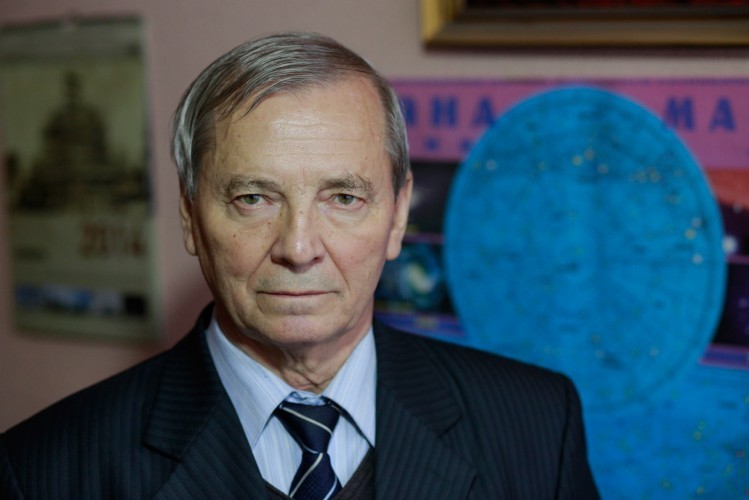
Traveling in Italy, Churyumov visited Rome and the Vatican, crossed the Strait of Messina, was on Lake Maggiore in magical Venice. In Milan, climbed to the terrace of the Cathedral of Milan, in Paris - to the Eiffel Tower. In Paris, Klim Ivanovich also visited the Champs-Elysées (here in 1814 Don Cossacks set up their military camp), in the Louvre, in the museums of d'Orsay, Rodin, in the Georges Pompidou Center, in the Disabled House at Napoleon’s tomb, in the Pantheon at the graves of Mary and Pierre Curie, Lagrange, Hugo, Zola, Dumas and other prominent French.
In Brussels I was in Atomium, visited the town of Waterloo with a panorama of the famous battle, visited the Palace-Museum of San Souci in Potsdam, on the mountain of Corcovado with the 38-meter monument to Jesus Christ in Rio de Janeiro, on the famous Copacabana beach, passed famous parks metropolis Sao Paulo, on Broadway and Wall Street in New York, visited Baker Street 221b in London, where the legendary Sherlock Holmes, Trafalgar Square, Tower, Westminster Abbey and many other prominent places of the world lived.
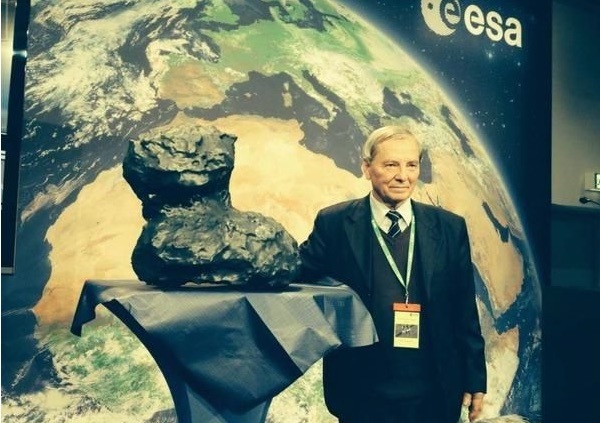
Among the famous structures of the planet, visited the scientist, and the Berlin Reichstag, and the Sydney Opera House, and the twin towers in New York, destroyed by suicide bombers in 2001, and the Mexican pyramids of the Sun and the Moon, and the planetarium in Moscow, St. Petersburg, Nizhny Novgorod, Paris, London, Sao Paulo, Rio de Janeiro, Torun. Klim Ivanovich was in Kamchatka and Chukotka, on the lakes Baikal and Siljan, swimming in the Laptev Sea and in the Aral Sea (when there was still water in it), in Tasmanovo and Bering, in the Pacific, Arctic and Atlantic oceans. He was a member of more than 30 expeditions to observe comets, solar eclipses, and to study auroras; he was searching for meteor craters on the surface of the earth; observed hundreds of comets in various observatories of the world; He was directly involved in rocket launches at the Baikonur, Plesetsk and Kourou cosmodrome (French Guiana), as well as in countless international conferences where more than 200 scientific reports were delivered.
The Churyumov family moved to Kiev in 1949. Here Klim went to the sixth grade of the 11th male school on Yaroslav Val. After the seventh grade, he entered the Kiev Railway College, which he graduated with honors in 1955. He among 5% of graduates recommended for admission to higher educational institutions.
Klim Ivanovich entered the Faculty of Physics (specialty "physics-astronomy") of the Taras Shevchenko Kyiv State University. After graduation, in 1960, he was sent to a polar geophysical station in Tiksi Bay of the Yakut Autonomous Soviet Socialist Republic. There he explored auroras, earth currents and the ionosphere.
In 1962, Klim Ivanovich returned to Kiev and went to work at the Arsenal plant, where he participated in the development of astronavigation equipment for space rockets and its tests at the Baikonur and Plesetsk cosmodrome. In 1964, Churyumov was awarded the title "Drummer of Communist Labor." Simultaneously with the work at the plant, he taught theoretical and technical mechanics at the Kiev Electromechanical College of Railway Transport.

During his postgraduate studies at the Kiev State University (specializing in astrophysics, from 1965 to 1968), Churyumov was a prominent astronomer Professor Sergey Konstantinovich Vsekhsvyatsky (the All-Svyatsky year was recognized by UNESCO as a worldwide scientific community in 2005). After finishing graduate school, Klim Ivanovich stayed to work as a research fellow at the Department of Astronomy at KSU. He observed comets at a suburban station of the Kiev University in the village of Lesniki and on astronomical expeditions to the highland regions of Central Asia, the Caucasus, Siberia, the Primorsky Territory, Chukotka and Kamchatka.
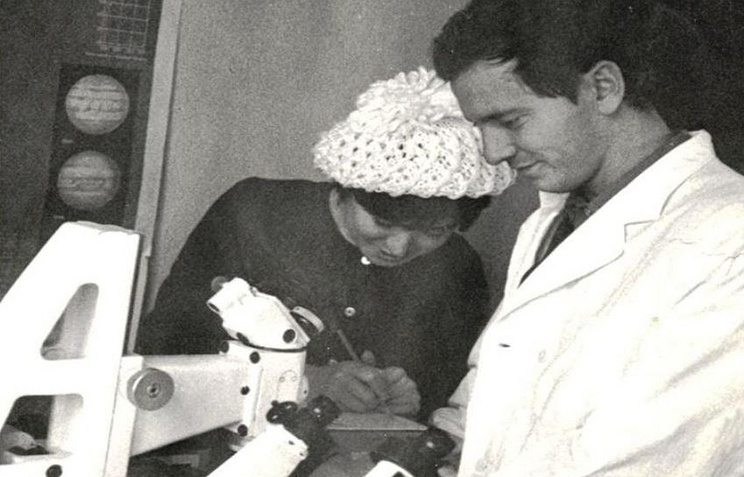
In 1969, the university equipped an expedition consisting of three people, including Klima Churyumov and Svetlana Gerasimenko, to observe periodic comets to Alma-Ata (now Almaty), to the Astrophysical Institute, later named after Academician of the USSR Academy of Sciences V. Fesenkov. Observation of several short-period comets of the Jupiter family was performed using a 0.5-meter telescope of the Maksutov system.
Many photographic plates were obtained and studied. In three images, an object was discovered, which was first mistaken for the periodic comet Comas Sola (32 / Comas Solà), but later it turned out that it deviates by 2 ° from the calculated position of this comet. Began the search for an unknown object in other images. The work ended in success. Having three positions of the celestial body, we managed to accurately calculate its orbit, which turned out to be elliptical and belonging to a new short-period comet with a period of 6.5 years.
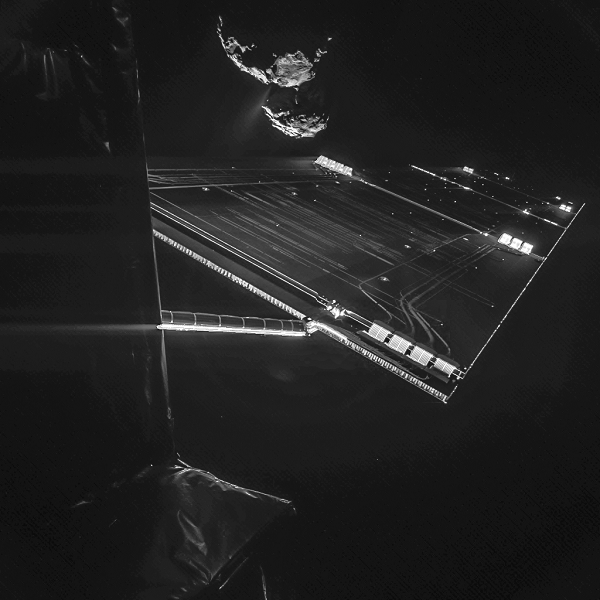
A message about this was sent to the Central Bureau of Astronomical Telegrams (Cambridge, USA), where a few days later they confirmed the discovery of the comet and assigned it the name “Comet Churyumov-Gerasimenko” (67 / Churyumov-Gerasimenko). On March 2, 2004, the European Space Agency sent the Rosette space mission to it to investigate the primary protoplanetary matter contained in the ice core of the comet. As we know, this mission ended in success.
The second, long-period comet, Klim Ivanovich, together with V.V. Solodovnikov in 1986, the International Year of Halley's Comet. Comet Churyumov-Solodovnikov's orbit (C / 1986 N1 Churyumov-Solodovnikov) is a highly elongated ellipse with an eccentricity close to 1, perihelion in the main asteroid belt and the inclination of the orbit plane above 90 ° (with reverse motion). The comet detected a “hot” ice core, which radiated a lot of energy in the infrared range, being at a distance of more than 17 astronomical units from the Sun.
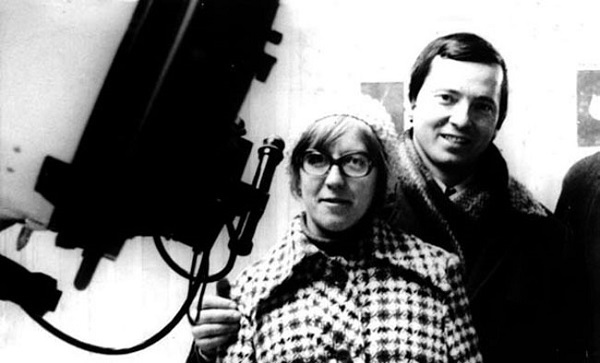
In 1972, Klim Ivanovich defended the dissertation "Study of Ikeya-Seki comets (1967n), Honda (1968c), Tago-Sato-Kosaka, and the new short-period comet Churyumov-Gerasimenko based on photographic observations", receiving the scientific degree of candidate of physical and mathematical sciences. In 1993, at the Space Research Institute of the Russian Academy of Sciences (Moscow), he successfully defended his doctoral dissertation on the topic "Evolutionary physical processes in comets."
Under the leadership of KI Churyumov defended eleven Ph.D. theses in comet physics and theories and methods of teaching astronomy.
Klim Ivanovich took an active part in international scientific observation programs for the comet of Halley in 1983-1987. (IHW and DOPROG), satellites of Mars - Phobos and Deimos in 1988 (“Phobos”), asteroids approaching Earth (“Tou-TATIS”, 1992), in the program of observations of Mars in 1992 and 1994 (“Mars-92” and "Mars-94"), in observation programs for the comet Gale-Bopp in 1997, Linear in 2000, and comets — the main targets of the Borrelia space missions in 2001, Wilda in 2004, Tempel in 2005 and many others.
On the basis of these observations, he, together with his students, obtained a large amount of spectral, photoelectric, photographic data, the processing of which yielded many scientific results, which were published in numerous articles, most of which were published in foreign publications.
Klim Ivanovich conducted original observations of flashes of the brightness of the satellites of Jupiter Io and Europe when the second nuclei A and Q of comet Shoemaker-Levy 9 (D / 1993 F2 Shoemaker-Levy), which were confirmed by observations at the Vatican Observatory, fell on this planet. Based on spectrograms obtained using the 6-m telescope of the Special Astrophysical Observatory of Russia (Zelenchukskaya village, Russia), he discovered the emission of negative molecular ions in the atmosphere of Skorchenko-George C / 1989 Y1 comets (Skorichenko-George), Linear C / 2000 WM1 (Linear) , Ikeya-Zhanna C / 2002 C1 (Ikeya-Zhang).
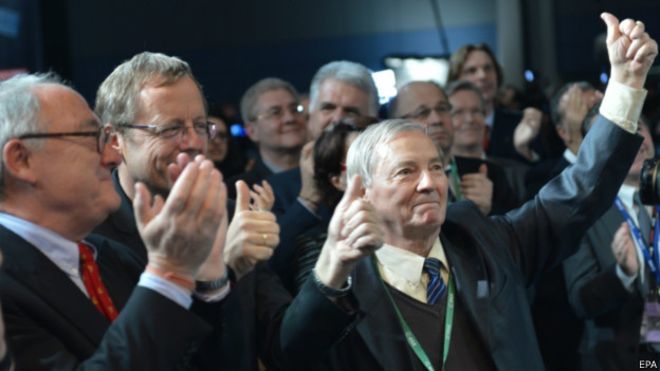
Klim Churyumov, as the head of the scientific organizing committee, organized and held fifteen international astronomical conferences: the readings of All Saints (1985, 1990, 1995, 2000, 2005, 2010), the International Seminar in memory of Professor A.F. Bogorodsky and S.K. All Saints (1994), International Conference in Memory of I.S. Astapovich AIST (1998, 2003, 2008), KAMMAK International Conferences (1999, 2002, 2005, 2008, 2011). He published more than 800 scientific papers, including the monographs “Comets and Their Observation” (1980), “Halley's Comet and Its Observations” (in collaboration with N. A. Belyaev; 1985).
Klim Ivanovich also prepared several teaching aids, among them: slide courses “Comet Halley” and “Sun” (one of the co-authors; 1992 and 2004). He is co-author of 24 reference books “Astronomical Calendar. The variable part "(volumes 81-105, 1978-2002), 11 Astronomical Calendars issued by the Main Astronomical Observatory of the National Academy of Sciences of Ukraine (1996-2006) and 14 Odessa Astronomical Calendars (2000-2012), he is also the author of more than 1000 popular science articles in numerous newspapers and magazines.

Churyumov was awarded two medals "For the discovery of new astronomical objects", gold (1986) and two silver (1975 and 1987) medals of the pavilion "Cosmos" of the USSR Exhibition of Economic Achievements in Moscow, medals "1500 years to Kiev" (1982) and "Veteran of Labor" (1987 ), Orders of Merit, II and III degree (2003), second (1987) and third (1972) prizes of the Ministry of Higher Education of Ukraine, diploma-certificate of the International Guard of Halley’s comet (1986), as well as the Taras Shevchenko Prize of Taras Kyiv National University Shevchenko (2004) and the Prize of the NAS of Ukraine. Academician MP Barabashova (2005). Klim Ivanovich was a scientific consultant in astronomy during the second edition of the Ukrainian Soviet Encyclopedia.
Since 2002, he has been the editor-in-chief of the popular astronomical journal Our Sky. In May 2006, he was elected a corresponding member of the National Academy of Sciences of Ukraine. The scientist is a member of the expert committee of the Higher Attestation Commission of Ukraine on Astronomy, two special councils for thesis defense, the editorial boards of scientific journals “Bulletin of the Taras Shevchenko Kiev National University. A series of "Astronomy", "Bulletin of the Astronomical School", "Physics and Astronomy at School", "International Comet Quarterly" and the popular science magazine "Universe, space, time."
Since 1998, Churyumov is a professor at the Taras Shevchenko Kyiv National University. In January 2004, by the decision of the Presidium of the Society "Knowledge", he was appointed director of the scientific and educational center "Kiev Planetarium". He also served as president of the Ukrainian Society of Astronomy Lovers. Klim Ivanovich - member of the International Astronomical Union (since 1979), the European Astronomical Union (since 1992), the Ukrainian Astronomical Association (since 1992); Honored Worker of Public Education of Ukraine (since 1998).For many years he was the scientific secretary of the Working Group on the Physics of Comets of the Astronomical Council of the USSR Academy of Sciences.
In 1984, Nikolai Stepanovich Chernykh called asteroid No 2627 discovered by him after the name of K.I. Churyumov. On the initiative of Klim Ivanovich Churyumov, the International Astronomical Union called the small planets national names-symbols: “Kobzar” (No 2427) - in honor of Taras Shevchenko, “Kamenyar” (No 2428) - in honor of Ivan Franko, “Skovoroda” (No 2431) - in honor of the outstanding Ukrainian philosopher of the 18th century Skovoroda, Knusheviya (No 4868) - in honor of Taras Shevchenko Kyiv National University, Bogolyubov (No 22616) - in honor of the prominent Ukrainian physicist and mathematician N.N. Bogolyubov.

In the fall of 2014, one of the materials of the special project “The Light of the Nation” was dedicated to the legendary Ukrainian scientist and astronomer Klim Churyumov. Then, in his interview with the Focus edition, he said these words:
- In August, I watched Perseids and made a wish: so that the landing went well. We'll see if it comes true, - the scientist smiles. Suddenly his look is sad.
- It is a pity that very few people in Ukraine know about this event. Probably because of the war, he sighs.
When you watch the heavenly bodies, is the earthly forgotten?
- Nothing is forgotten. But when you focus on observations, you really disengage from earthly problems.
What data from the Fila module are you waiting for the most?
- Each experiment gives the latest information about the cometary matter, magnetic and electric fields, structure, elemental and chemical composition. Data on complex organics will be obtained. After all, how life began on Earth is a mystery. And it can shed light. But the main thing - landing. Finally, there will be an idea of how to plant a rocket, say, on the dangerous cometary nuclei or asteroids that threaten the Earth. In fact, we will gain experience for the salvation of humanity in the future.
An infographic about Churyumov from the project “The Light of the Nation”, prepared by Focus:
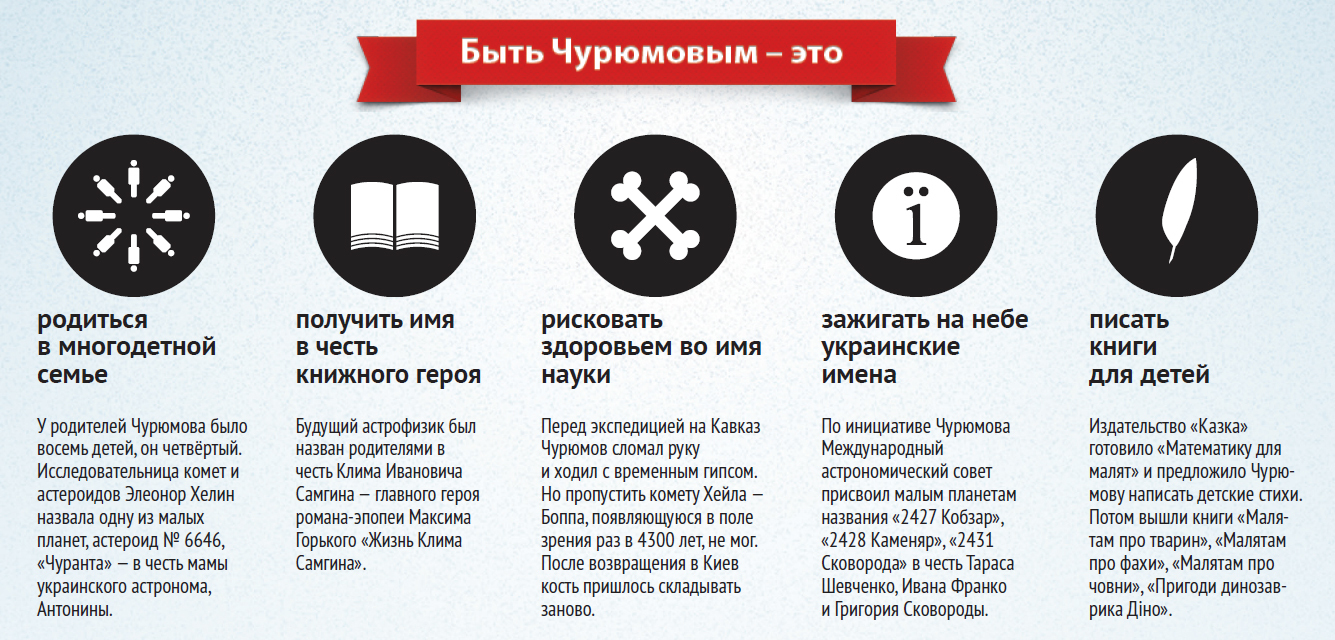
In an interview for Bit.ua, in 2014, Churyumov asked not to call him in publications “Soviet scientists”, as is often done in video footage. According to him, it really hurt him. Here is an excerpt from this interview:
— — . , — 1990- . .
, 170 . , , : «», «», , , , .
?
— — . , - .
- — , …
I would like to complete this translation with an unusual fact from the life of Klim Ivanovich, who managed to get acquainted with Robert Sheckley during his visit to Kiev. He told Sheckley about the "Rosette", and the fantasy was very surprised. According to Churyumov, Shekley said the following phrase:
“Here we, science fiction writers, are constantly inventing something, but here the fantastic reality comes true. What we invent is already, maybe, not even relevant in comparison with what is done with human hands. ”
October 12 Churyumov went from Kiev to Kharkov to meet with young scientists. In the car the scientist became ill. In Kharkov, an ambulance crew met a train at the station and took the patient to the hospital. Unfortunately, doctors did not manage to save him. Klim Ivanovich died of a stroke on the night of October 14-15, 2016.
Source: https://habr.com/ru/post/372775/
All Articles